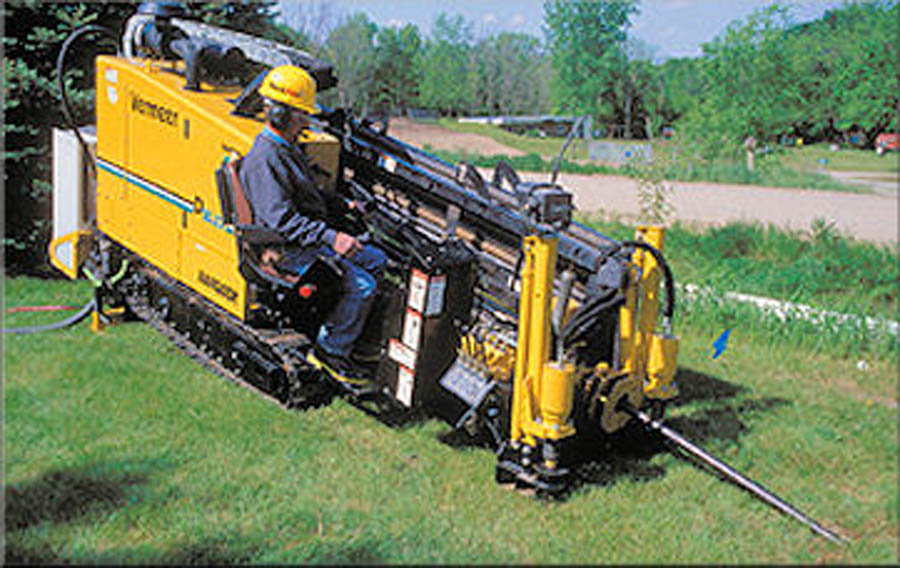Directional drilling has changed the field of subsurface exploration and utility deployment, progressing remarkably over the past few decades. As industries like oil and gas, public utilities, and clean energy continue to innovate, grasping the intricacies of this boring method grows more vital. For those unacquainted, directional drilling enables operators to drill down and then navigate the drill bit horizontally, creating boreholes that traverse complex subterranean conditions with precision. This approach enhances resource extraction but also manages challenges such as eco-friendliness and urban infrastructure demands.
In this article, we will explore the progress of directional drilling technology, explore its multiple applications, and examine the technical aspects that establish it as a leading choice across multiple sectors. We will showcase the advantages it provides over conventional drilling techniques, including less surface disturbance and financial savings, while revealing the important role it occupies in furthering sustainability initiatives. If you are an experienced expert or only starting to investigate this domain, our detailed guide aims to provide a more profound insight of directional drilling and its relevance in the fast-evolving world today.
Comprehending Navigational Boring
Navigational drilling is a process that allows for the drilling of wells at multiple inclinations rather than just only straight down. Recommended Site advanced approach allows operators to tap into target reservoirs that may lie far away from the upright hole. By modifying the angle and orientation of the bore tool, directional drilling can tap into oil and gas deposits, install utilities, or establish pathways for conduits without penetrate directly over the desired point.
The core principle behind directional drilling is to employ sophisticated technologies that enable for precise management over the boring trajectory. check my source as mud motors and custom bore tools facilitate the navigation of the bore as it ascends, descends, or turns laterally. Additionally, ongoing monitoring of the boring process with monitoring technology makes sure that operators stay on target, maximizing efficiency and minimizing the likelihood of costly blunders.
This technique has transformed multiple industries by permitting projects in areas that would be problematic or unfeasible with conventional upright boring techniques. Whether it's accessing resources underneath urban infrastructure or minimizing ground disruption in environmentally sensitive locations, navigational drilling has turned into essential in current construction and retrieval. As the industry develops, so do the methods and approaches, continuously boosting the capabilities of directional drilling.
Benefits and Applications
Directional borehole technology offers multiple advantages over conventional drilling techniques, chiefly through its ability to minimize surface disruption. By drilling at various angles, operators can reach targeted locations without the need for extensive surface clearing, preserving the surrounding environment. This technique is particularly beneficial in metropolitan areas where space is limited and current facilities must be preserved. As a result, directional drilling supports the landscape while allowing for effective material retrieval and infrastructure setup.
The applications of directional drilling go beyond oil and gas extraction. It plays a key role in the field of utility deployment, enabling the efficient placement of water, wastewater, and telecommunications lines. This technology enables under-road and under-river installations, eliminating the necessity of destructive trenching. Additionally, directional drilling is becoming increasingly important for green energy initiatives, like geothermal and wind power, where precise drilling techniques are needed to maximize energy efficiency and reduce environmental harm.
As the call for eco-friendly and efficient infrastructure increases, the benefits of directional drilling become more evident. Its ability to reduce the environmental footprint of drilling operations makes it an ideal choice for sensitive locations, such as marshes and densely populated areas. Furthermore, the cost efficiencies associated with directional drilling, combined with its technological innovations and surveillance technologies, position it as a key tool in upcoming building and power initiatives. The continuous advancement of directional drilling techniques will transform the future of utility management and resource handling for years to come.
Upcoming Developments in Guided Drilling
The prospects of horizontal drilling is set for major advancements driven by developing technologies. Artificial intelligence and machine learning are becoming integral to improving drilling operations, enabling greater predictions of drilling trajectory and lessening the risk of expensive mistakes. By processing large amounts of data in real time, these technologies can boost the effectiveness of drilling processes and improve decision-making, leading to less risky and more streamlined operations.
In addition to AI, the adoption of cutting-edge sensors and software systems is reshaping how directional drilling projects are managed. These tools enable live bore tracking and monitoring, allowing engineers to evaluate performance metrics and environmental impacts more accurately. The further advancement of these systems will likely lead to increased precision in drilling techniques, which is especially crucial in urban environments where space is limited and the risks are significant.
As the sector shifts towards sustainability, there is a increasing emphasis on directional drilling as a means to facilitate green infrastructure projects. Innovations in drilling fluids, waste reduction practices, and resource-saving drilling techniques are becoming more widespread. The focus on lessening the environmental footprint of drilling activities correlates with global sustainability goals, making directional drilling not just a practical choice and also a key component of upcoming infrastructure development.

